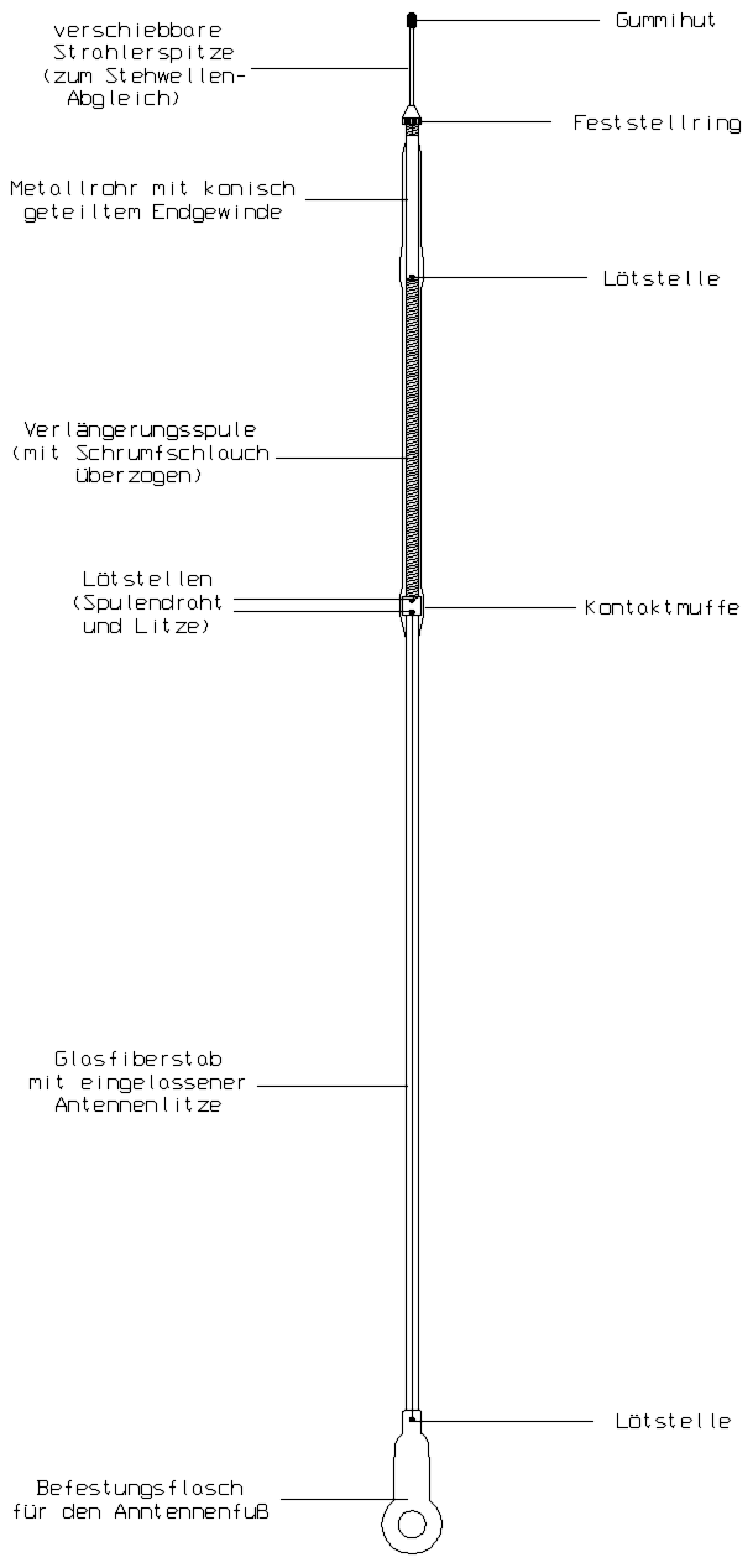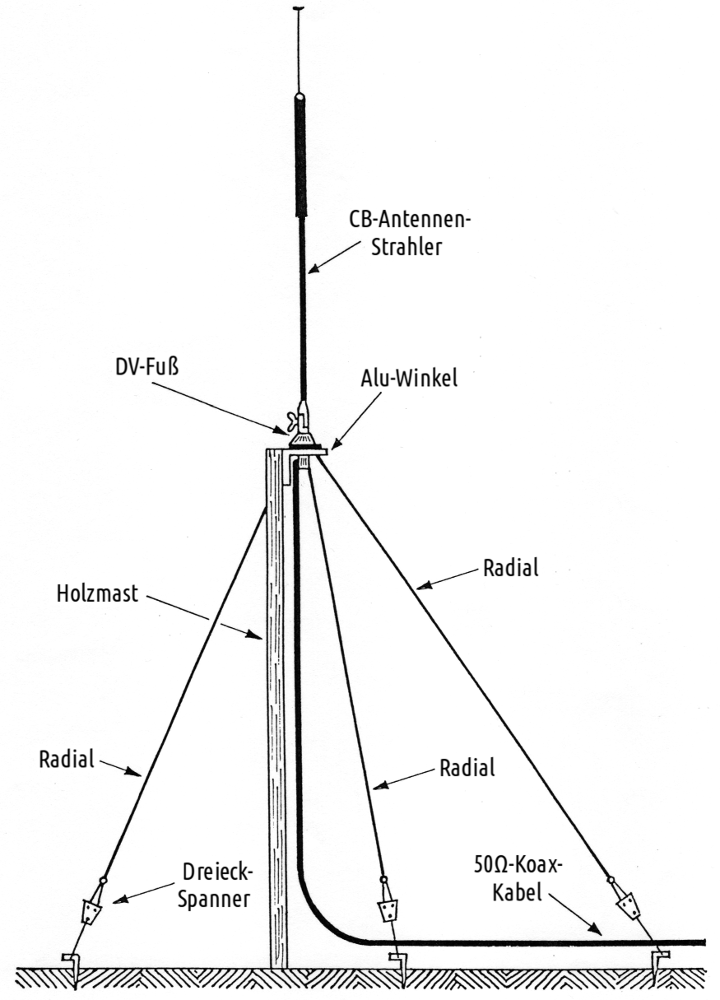CB mobile antenna as a station antenna for the 10m band
For the CB radio in the 27 MHz range intended mobile antennas, with small adaptations can also be used for the 10m band well. Since its are usually quarter-wave antennas, however, they need as a ground, the metallic car body. If they are not to be operated on a car, a radial connected to ground at the antenna base is required. This also applies analogously if such antennas are to be mounted on vehicles with plastic bodywork (for example mobile homes and boats).

As a station antenna mounted on the balcony, it is advantageous if a metallic balcony lattice greater vertical and horizontal extent is present. At about three meters wide and 80 centimeters high it forms such a broadband radial, as it is also present by a car body. In this case, a mobile antenna can be directly attached to the balcony lattice for example with an mirror mounting set for trucks. An adjustation of that radial is then not necessary.

|
The situation is different when there is only a low lattice above the wall, or no metallic things at all. In this case you need an matched radial. This can consist of a single-core cable with nearly a quarter wavelength. Best matching results are obtained according to experience, when such a radial is led down beveled from the antenna base point, as shown in the above drawing. In order to use the radiator of a CB radio antenna for the 10m amateur band, there are different ways depending on the design. The resonant frequency of the classic DV-27 CB radio antenna, whose structure is shown on the left, is tunable by adjusting the radiator tip. Usually, however, this only succeeds at most up to the 10m SSB range. If the radiator tip is removed without any replacement, you usually get resonance in the upper area of the 10m band. Thus, the antenna is then suitable for FM operation in the range of 29.5...29.69 MHz and so for FM repeater operation. For antennas with an accessible base or center loading coil, you can attain the 10m range by winding from the coil - depending on the length of the radiator and the desired resonance frequency - about 5 to 30 percent of the number of turns. In many such antennas, the covering of the coil can be unscrewed and then the solder joints of the usually made of copper enamel wire coil are accessible. Otherwise, the possibility remains to shorten the tip of the antenna radiator by cutting or sawing off. In these experiments, it is best first to use a radial with a length of about 2.50m. If the standing wave ratio can not be improved by changes to the radiator, then shorten the radial cable step by step by about fifth an inch until the best possible value is found. Values for the VSWR in the range of 1.1 to 1.2 in this way are generally always achievable. |
With such a mobile antenna radiator, a real ground plane station antenna can also be built without much effort. If necessary, the necessary material can be obtained on site during a camping holiday. To do this, a wooden pole is driven a little bit into the ground. A DV mobile antenna base, which carries the radiator, is attached to it with an aluminum bracket. Mechanically and electrically connected to the angle are three radials made of flexible and insulated wire with a cross-section of e.g. 1.5 square. This creates an antenna of the so-called triple-leg type, which is ideally suited for DX connections. The radials are each about 2.5 meters long for the 10m tape. They also serve as guy ropes and are attached to the ground with tent pegs. They are tightened with triangular tensioners, as they are needed for tents. The antenna constructed in this way is suitable for connection via a normal 50Ω coax cable.
